Within the context of the participatory tomato breeding project that Bioleft has been coordinating for two years, last Wednesday, January 26, we visited Juan Martín, one of the project’s growers-breeders. Juan Martín is evaluating two types of Creole tomatoes from the project To the rescue of the Creole tomato in General Rodríguez; accesions #7 and #56.
Accesion #7 or “Colorado grueso” is a ribbed, irregular Platense-type tomato, while accesion #56, also known as “Juan Domingo Perón”, is a more even, round tomato. Its seeds were collected, respectively, in 1936 in Argentina (where it is not known) and in 1952 in Mendoza, Argentina.
The crop is now at the beginning of the harvest stage, and for participatory breeding it is very important to record observations on the crop. In this way, a selection of the best tomatoes can be made, but information can also be shared with other producers. To accompany Juan Martín, the Bioleft extension team and breeders went to the field to exchange knowledge, analyze the crop and take records on the Bioleft platform.
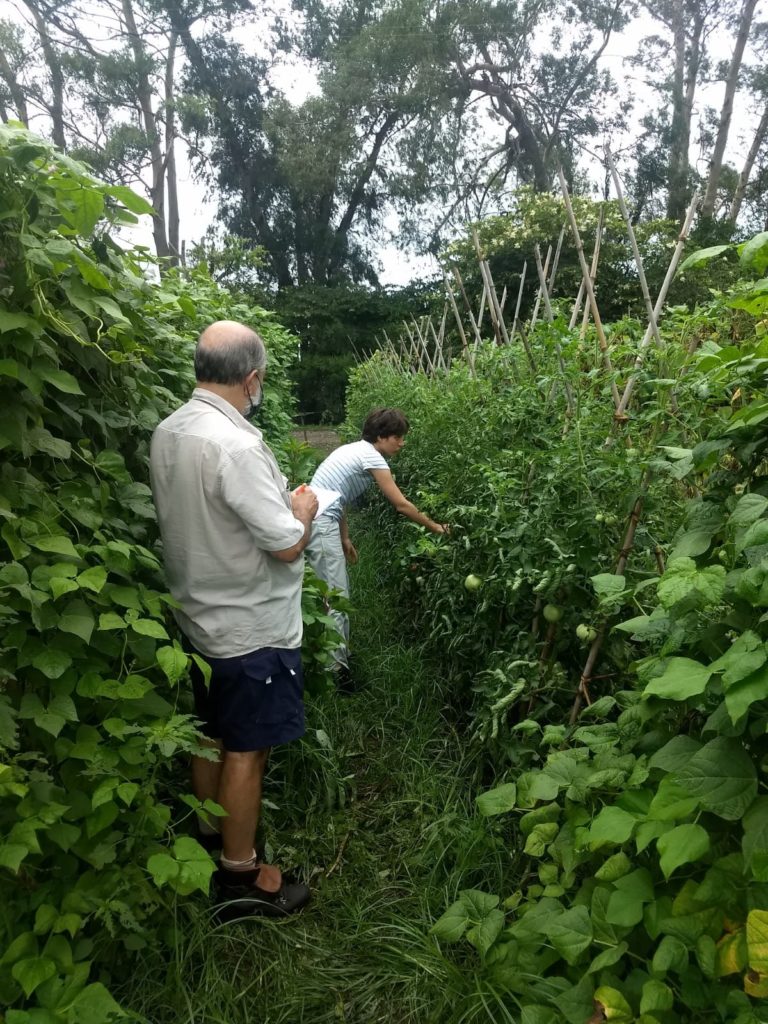
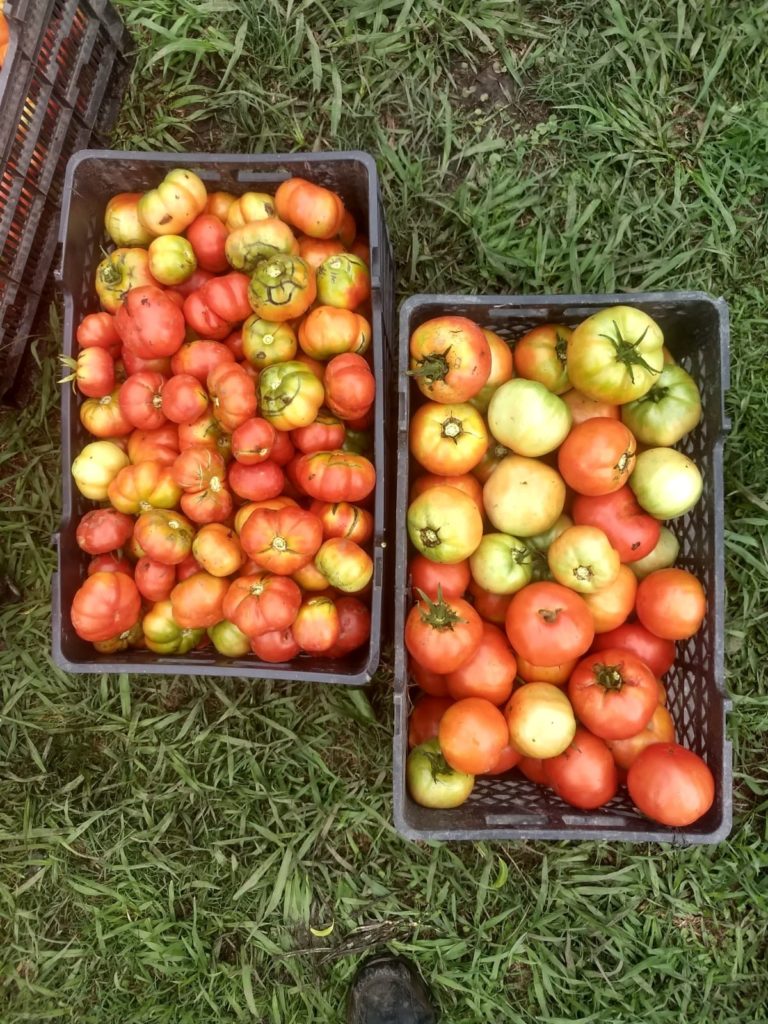
Harvested fruits: accesion #7 to the left and #56 to the right. 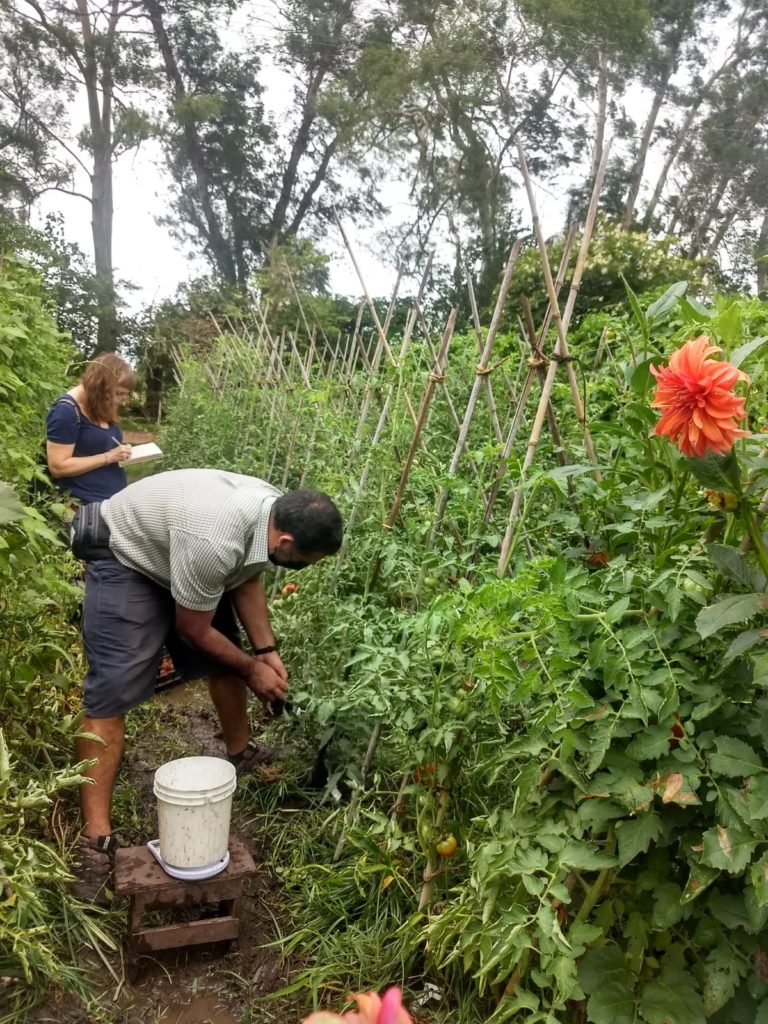
During the visit, and in the company of a beautiful rain, we recorded the amount of fruit and the kilos harvested from each plant, we evaluated their health and other data such as tolerance to sunburn. These data will serve to be able to make a selection of plants from which to save seed, in order to improve both populations.
We were able to observe clear differences in overall health between both entries. Juan told us that several plants in accesion #7 had suffered losses due to a fungal disease, for which they were replaced by other seedlings, but even so, some did not prosper. In contrast, accesion #56 suffered only one loss and showed superior overall health and better sunburn tolerance. Beyond these differences, and especially taking into account the extreme weather events this season, the crop was in good condition.
Once the harvest is finished, all the data recorded during the cultivation will be analyzed to select the plants that stand out in the attributes chosen for breeding, and a new meeting will be held between the producers-breeders and the extension team to share views on the experience and define the next steps.
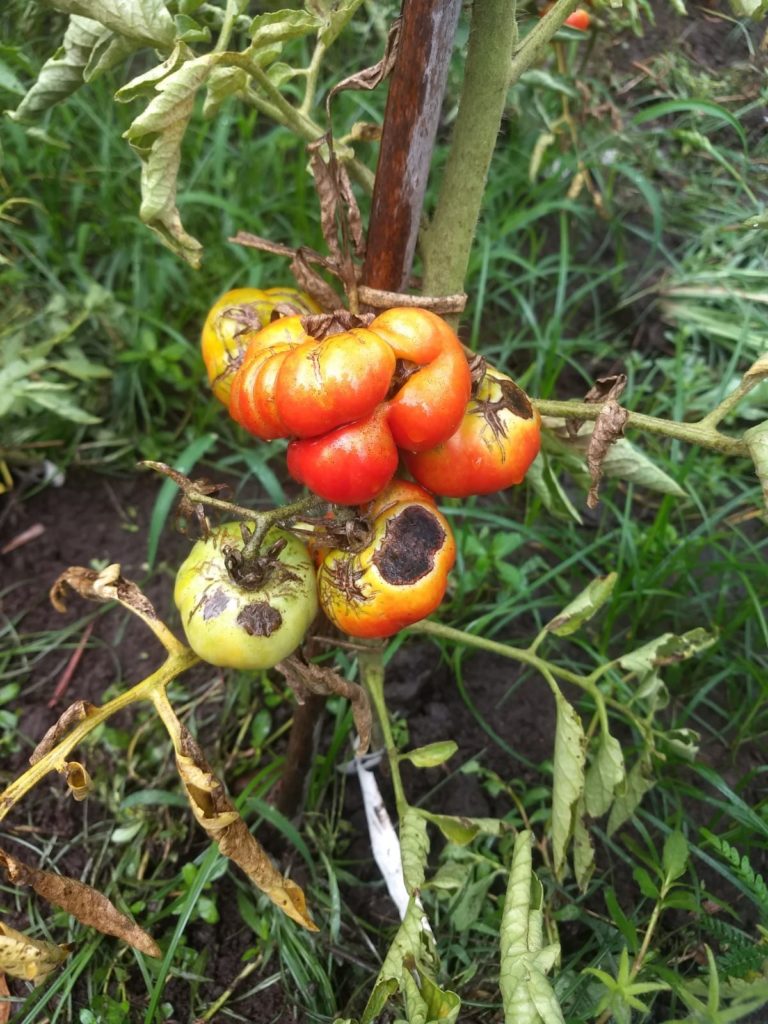
Sunburnt accesion #7’s fruits. 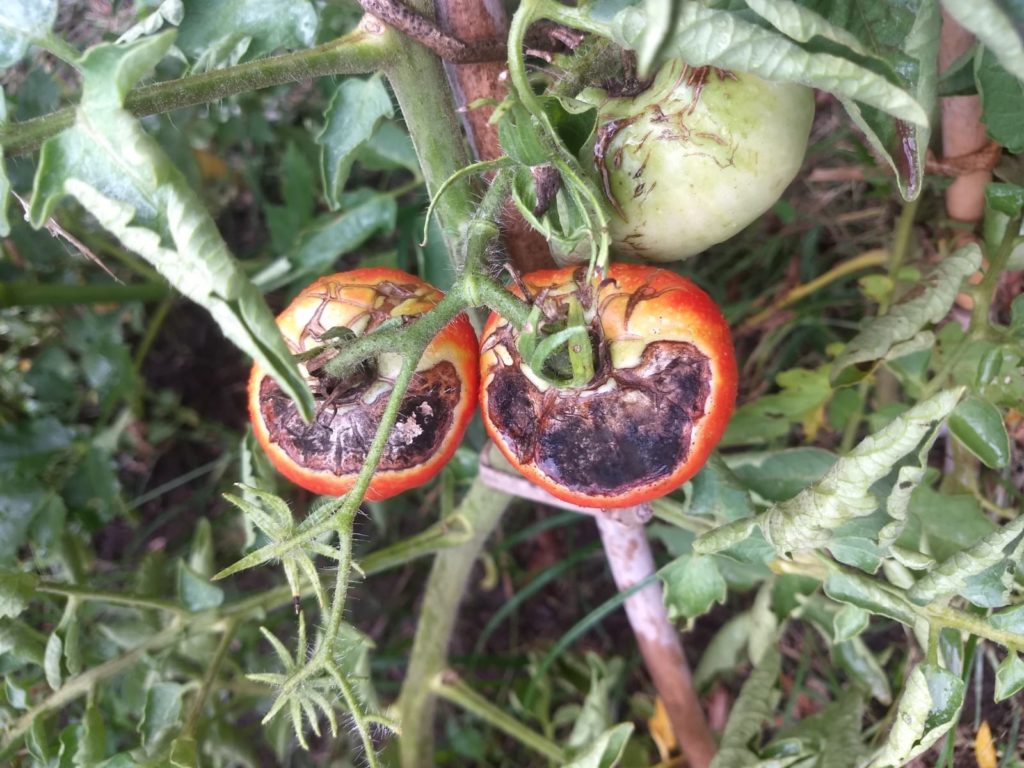
Sunburnt accesion #56’s fruits.